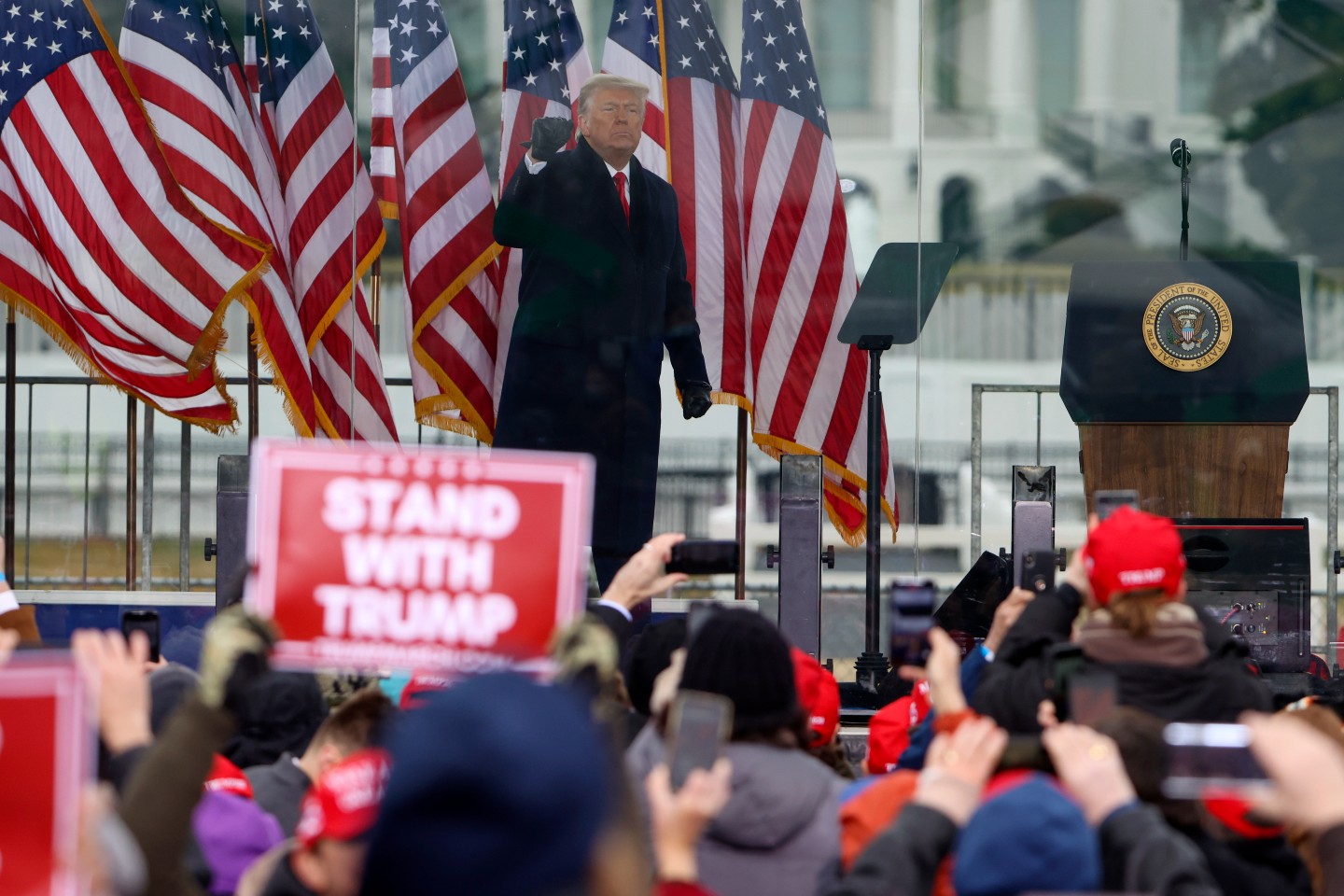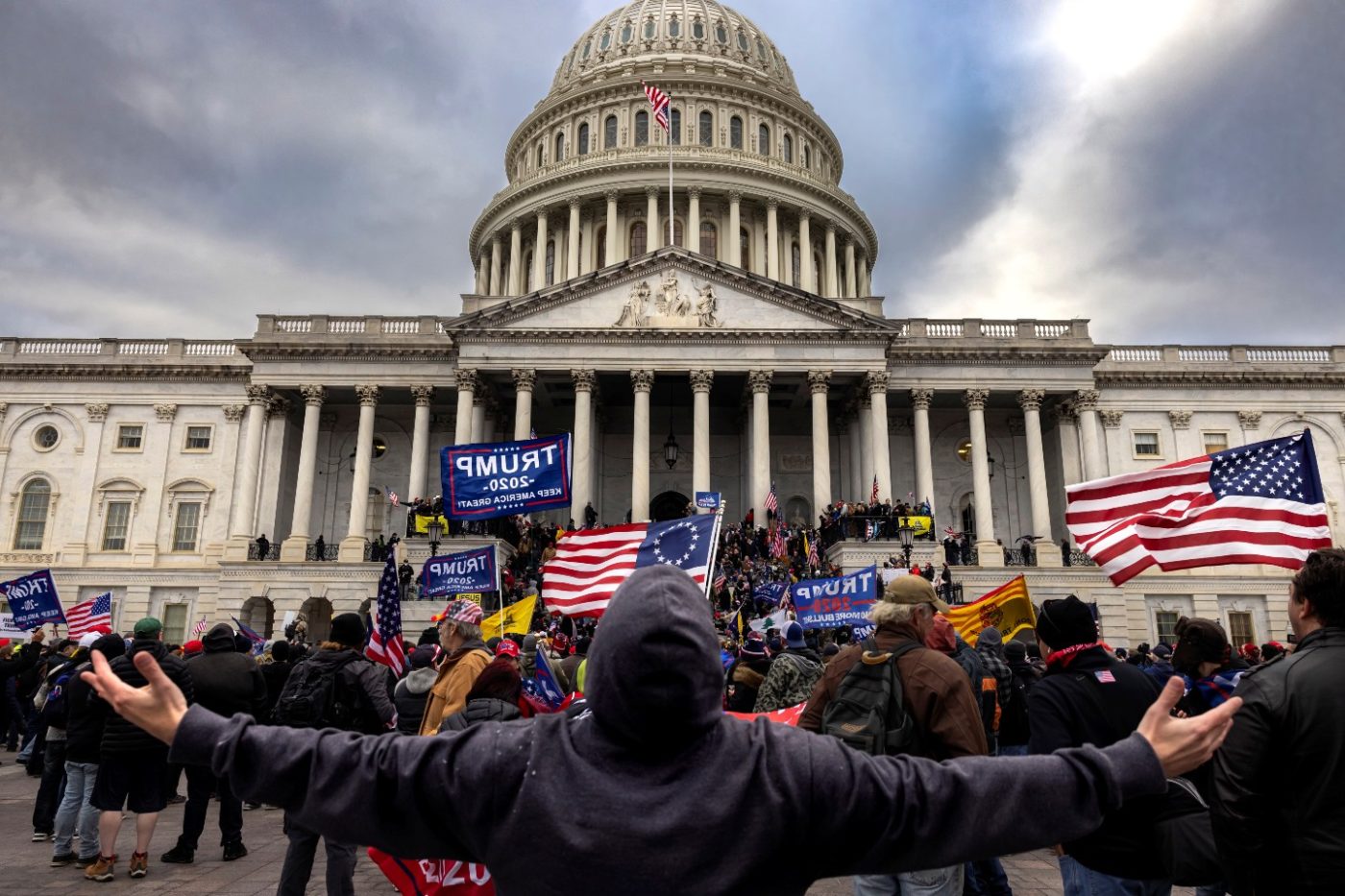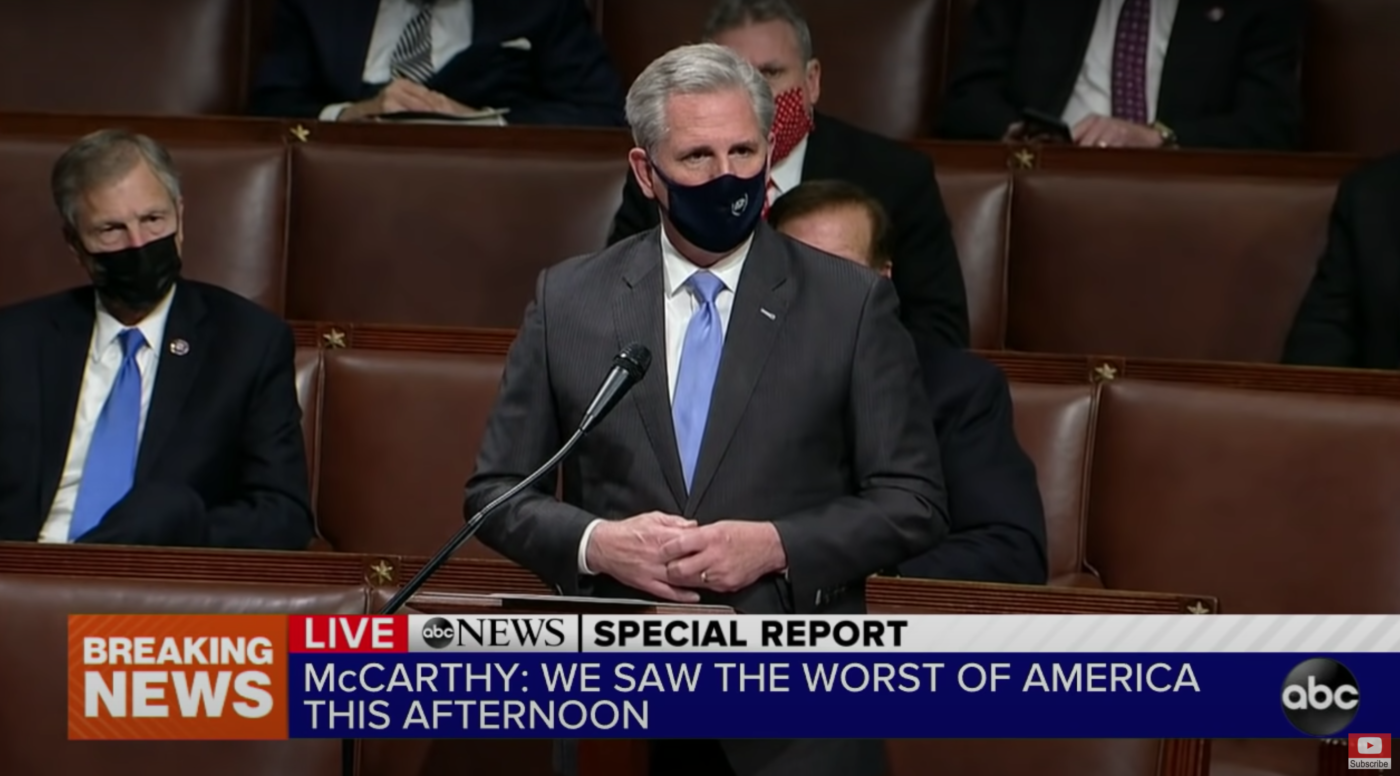
After the Jan. 6 riots at the Capitol Building, scores of large companies told the press they would be pausing their PAC contributions or reviewing their political giving.
Some companies have since restarted their PACs, including some “pure-play contractors” that rely nearly entirely on government funding for their revenue. Quietly, Lockheed Martin, Northrop Grumman, and BAE Systems, each of which received more than 85% of their 2019 revenue from government contracts, are again giving PAC contributions, including to the Republican members of Congress who voted against certifying the Electoral College results.
These companies use public funding from lucrative defense contracts to pay salaries for their executives and employees, who then provide the funding for their PACs that make donations to lawmakers in charge of appropriating the funds for their future contracts. By donating to the objectors, these PACs are routing money from taxpayers to politicians who have shown a willingness to subvert taxpayers’ rights to vote to choose their presidential electors.
Other military contractors that said they were hitting pause on their PACs after the Jan. 6 melee fired up donations again starting in April and May, including Boeing, Leidos, and Huntington Ingalls, according to their monthly FEC reports. These companies’ PACs donated to members of both parties, including GOP objectors.
In the 2020 election cycle, the PACs of Northrop Grumman, Lockheed Martin, and Boeing were the third-, fourth-, and fifth-highest donors to the GOP election objectors among around 100 large companies that planned PAC reviews, according to a CNN tally, giving a total of over $1.5 million to the 147 lawmakers. Northrop put out no press release regarding restarting its PAC and didn’t respond to Bloomberg reporters; Lockheed and Boeing gave statements to press, but also did not release any information about how they reviewed their giving policies.
The Pentagon contractors’ donations come as Congress begins taking up the annual budget-setting process in the National Defense Authorization Act. A crowded legislative calendar has meant that the process is pushed later than usual this year, with defense subcommittees expected to mark up their sections of the enormous funding bill just before August recess, and the House Armed Services Committee starting full committee markup on Sept. 1.
Lockheed is by far the largest government contractor, with nearly $76 billion in contracts last fiscal year, while Northrop brought in nearly $15 billion and Boeing was awarded $23 billion in contracts. Lockheed is the top “pure-play contractor,” so named because around 95% of its income comes from governments, alongside Northrop’s 85%, according to Defense News. Boeing received around 45% of its revenue from government sources in fiscal year 2020.
Military contractor Leidos Holdings also restarted PAC donations, after giving $183,000 to Republican objectors in the last cycle and then temporarily pausing after the violence around the Jan. 6 vote. The engineering and IT company received over $9 billion in contracts in FY20, and in May ended its PAC pause by making $23,000 in contributions to GOP objectors. The company’s CEO had said in January, “Violence, lawlessness, and anarchy have no place in our nation.”

Now restarting their PACs, contractors BAE Systems and Huntington Ingalls received over $21 billion and over $8 billion in defense revenue in 2019. Shipbuilders Huntington Ingalls had given $161,000 to Republican election objectors in the election cycle before their Jan. 6 vote. Both donated recently to election objector Rep. Ken Calvert of California, the ranking Republican on the defense subcommittee of House Appropriations.
In May, Boeing’s PAC contributed the per-cycle maximum of $5,000 to election objectors House Minority Leader Kevin McCarthy of California and Minority Whip Steve Scalise of Louisiana, as well as to Rep. Vicky Hartzler of Missouri, who oversees several Boeing contracts as the ranking member of the House Armed Services Subcommittee on Tactical Air and Land Forces. These contracts include the Chinook helicopter, which Boeing often advertises in a dramatic pop-up window on Capitol Hill news site Roll Call, and the F-15 E/X fighter jet, which is manufactured at the company’s plant in St. Louis, Missouri.
Also in May, Boeing’s PAC made $552,000 in federal contributions, including $105,000 each to the NRCC, NRSC, DCCC, and DSCC using the party committees’ building and legal funds. It gave $25,000 to the Republican Attorneys General Association, an organizer of the pro-Trump rally that preceded the Capitol Building break-in. It sent the $5,000 maximum to Democratic congressional leaders including Speaker Nancy Pelosi and Majority Whip James Clyburn. The aerospace giant donated $5,000 to Sen. Joe Manchin’s leadership PAC, Country Roads PAC, and that of Majority Leader Chuck Schumer, IMPACT, as well as Mitch McConnell’s Bluegrass Committee.
Lockheed PAC’s donations in April included $30,000 apiece to the NRCC and the DCCC, with another $15,000 sent to the building fund of each, as well as $15,000 to each party’s Senate campaign arm. Out of over $100,000 it gave that month to both parties, Republican election objector Sen. Tommy Tuberville of Alabama received $1,000, with the same amount going to several House objectors like Rep. Jim Banks of Indiana and Rep. Bill Johnson of Ohio.

In May, Lockheed’s PAC kicked up its overall spending dramatically to more than $450,000 total, according to FEC reports, including giving $50,000 to each party’s gubernatorial campaign arm, plus $15,000 to the DNC and RNC alike, and $5,000 apiece to the PACs of the moderate New Democratic Coalition and the Tuesday Group, composed of Republicans.
In late April, a bipartisan group of 132 House members sent a letter seeking to continue sky-high levels of Pentagon spending on Lockheed’s dysfunctional F-35 program. One of that letter’s lead organizers was Rep. Michael Turner (R-Ohio), one of four co-chairs of the Joint Strike Fighter Caucus, whose campaign committee received $2,000 from Lockheed’s PAC in April and $1,000 in May. The F-35 program’s budget remained relatively stable in President Biden’s budget proposal, which could be raised further by congressional authorizers. In U.S. acquisitions of the jet, which is also sold abroad, the administration has requested 85 aircraft next year, more than the 79 that the Pentagon had initially requested last year before Congress padded the sum to 96 planes.
In a statement to Defense News, Lockheed said, “Following the customary ‘start of a new cycle’ evaluation of our political engagement program, our PAC program will continue to observe long-standing principles of non-partisan political engagement in support of our business interests.” (The statement’s use of “non-partisan” could more accurately be “bipartisan.”)
Raytheon, the second-largest federal contractor last year at over $28 billion issued, has kept its PAC pause in effect and has not reported any contributions this cycle. The defense contractor’s PAC previously gave $561,000 to GOP objectors in the 2020 election cycle.
The PAC of BAE Systems sent $15,000 donations to each of the NRCC, NRSC, DCCC, and DSCC in April, as well as a $5,000 donation to Calvert and a $2,500 donation to Hartzler. In total, the contractor’s PAC spent over $155,00 in April and May.
General Dynamics, the third-largest government contractor with $25.6 billion received last year for defense, had its PAC give out around $266,000 in April and May, including $15,000 in April to the NRSC and $35,000 in May to the NRCC.
President Biden’s budget proposal for fiscal year 2022 calls for $753 billion in defense spending out of the approximately $1.5 trillion federal discretionary budget, a 1.7% increase in military spending above what was appropriated last year under Trump, which many progressive Democrats in Congress are pushing to reduce and reallocate to “health, housing, education, and jobs.”
Some 50-60% of the Pentagon’s budget goes to the weapons contractors who often make maximum PAC contributions to the campaigns of congresspeople who approve funding for and oversee their contracts. The Pentagon followed up Biden’s proposal with a $17 billion wish list, defense analyst Dan Grazier writes, and the new Space Force is asking for another $2.2 billion, “plus-up requests” that would raise military spending by 4% from the current proposal.
For more muckraking on the weapons industry and military contractors, get the Sludge newsletter.
